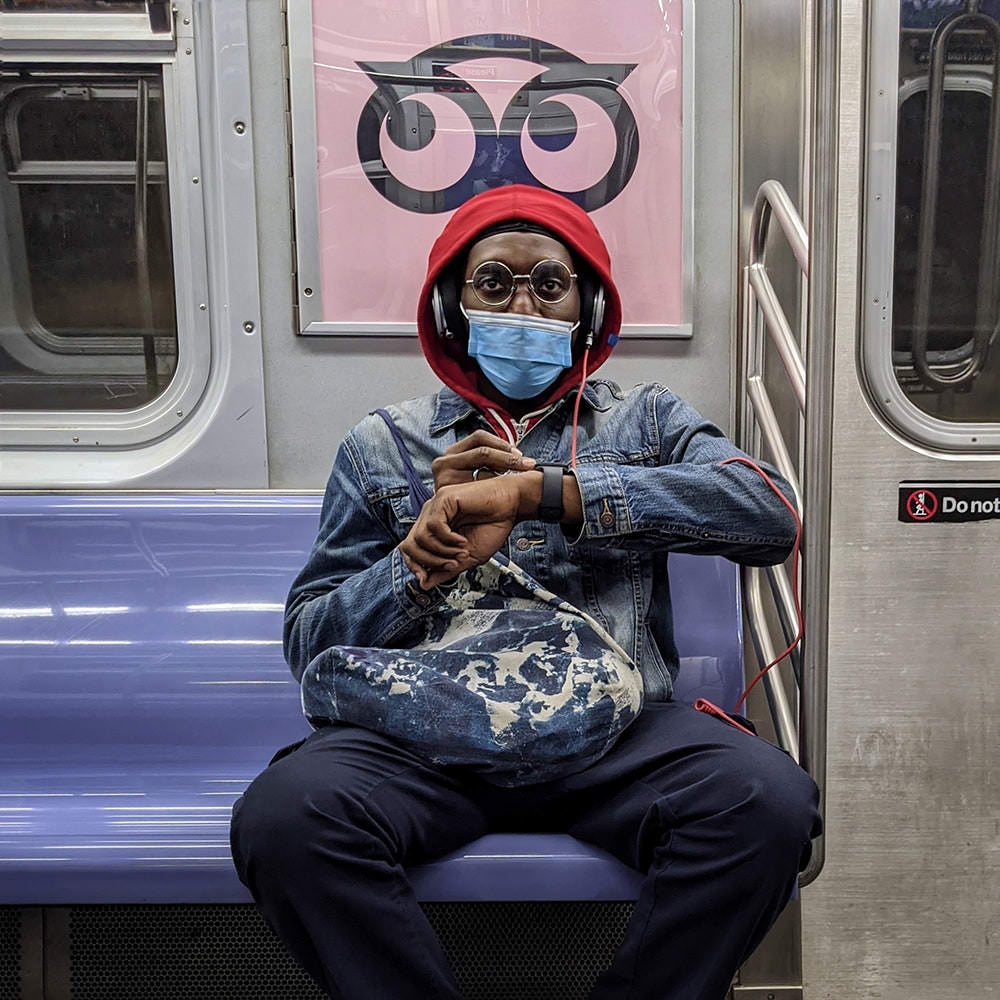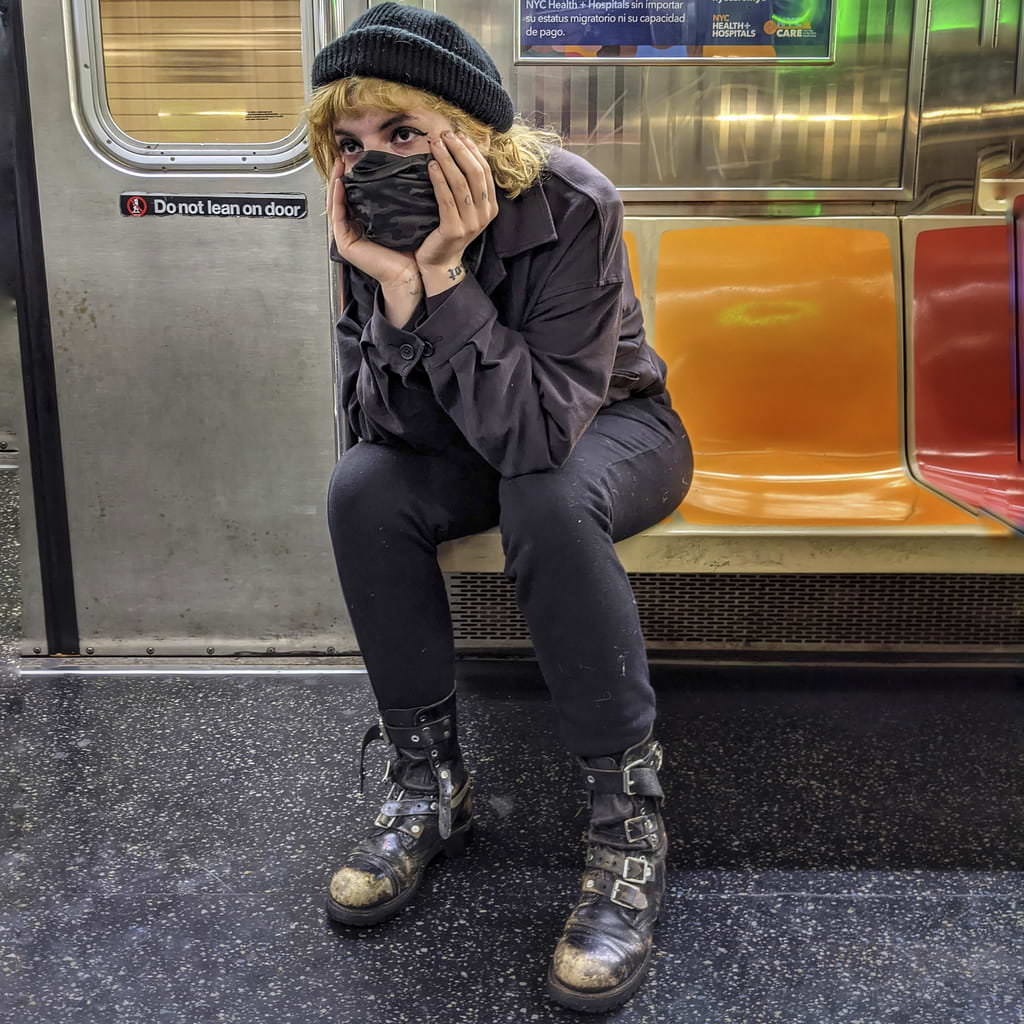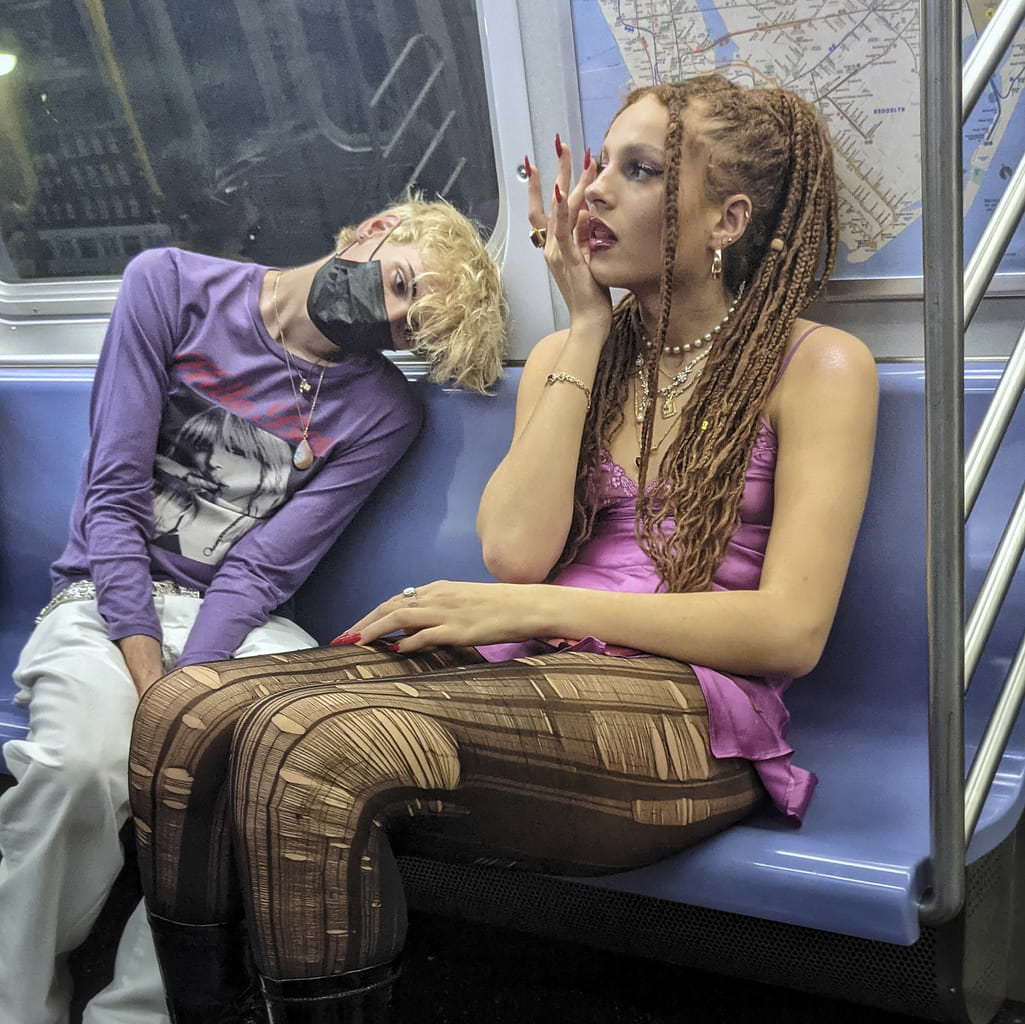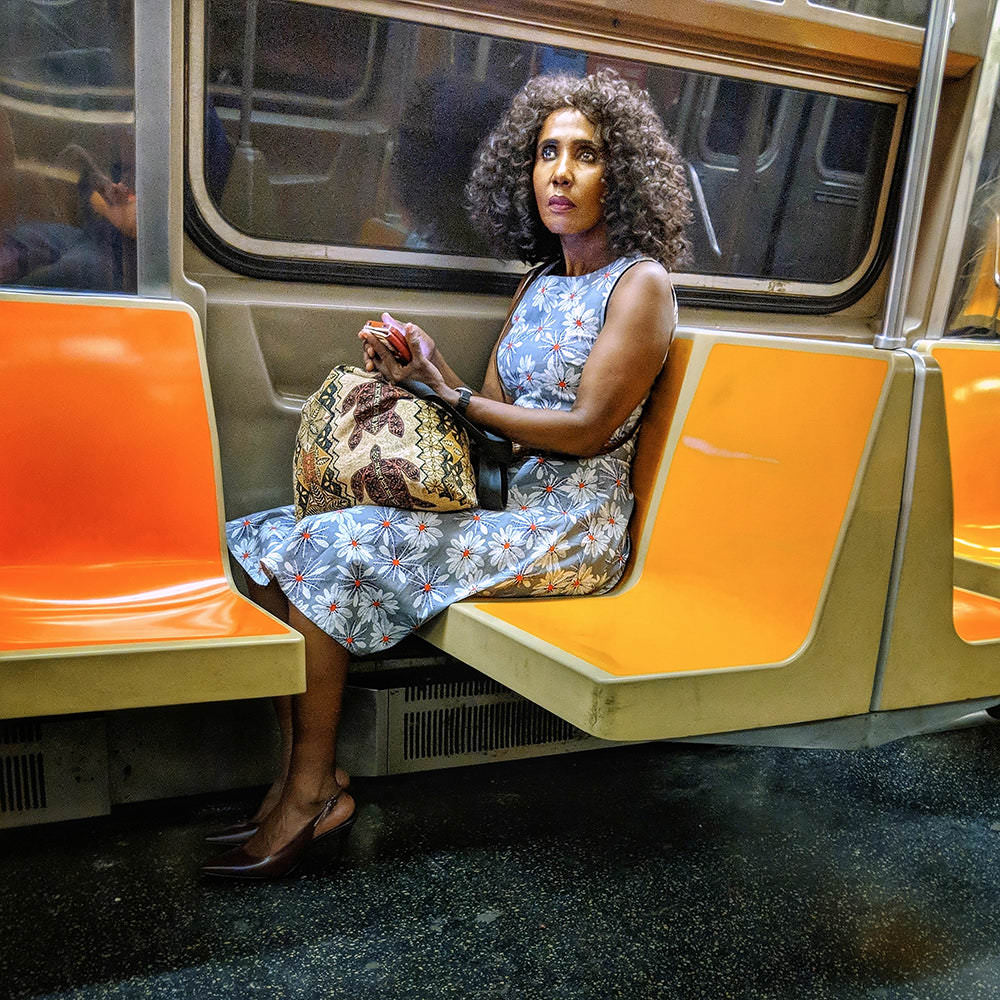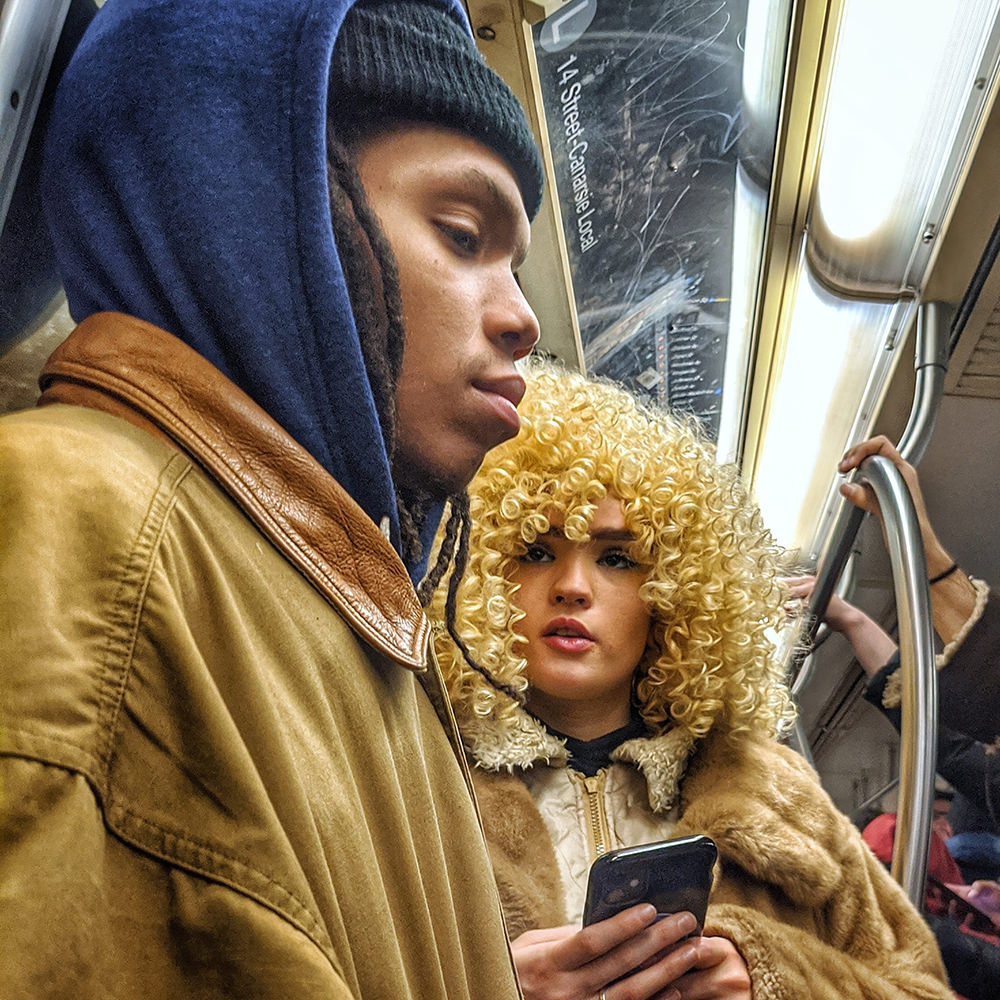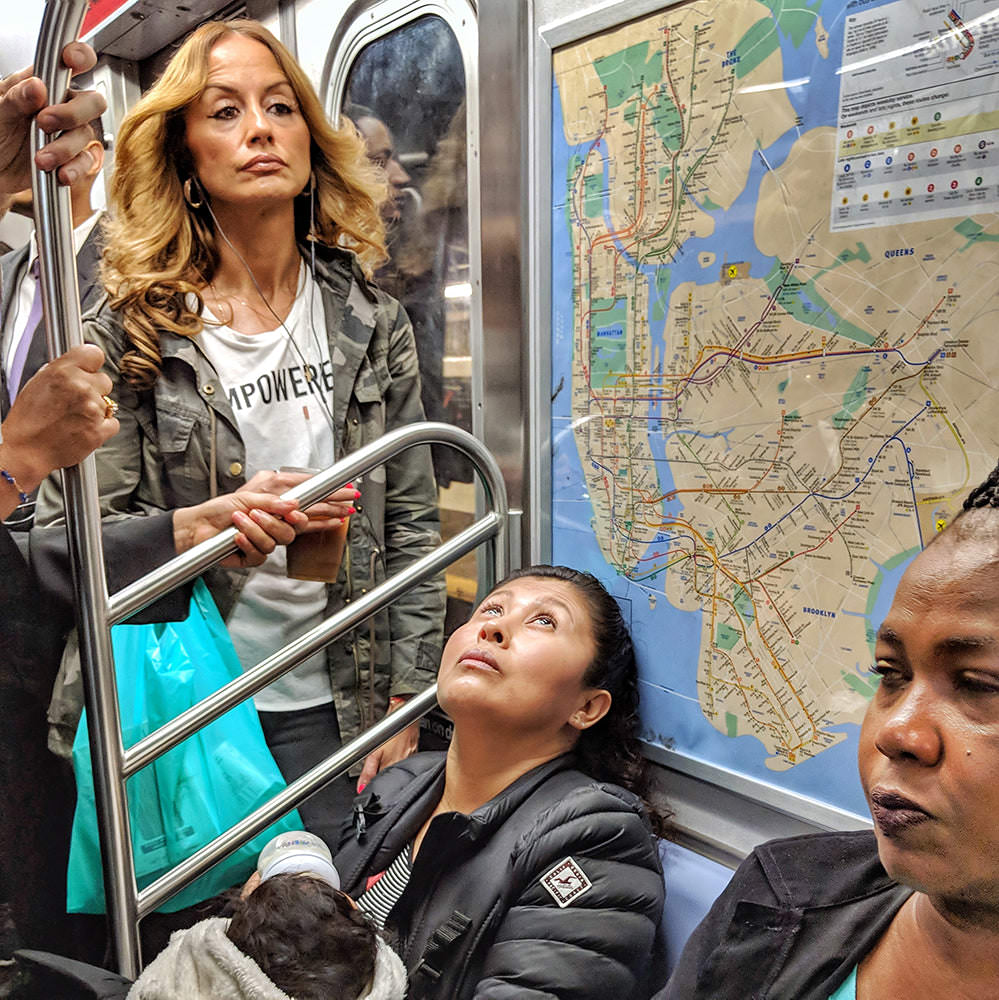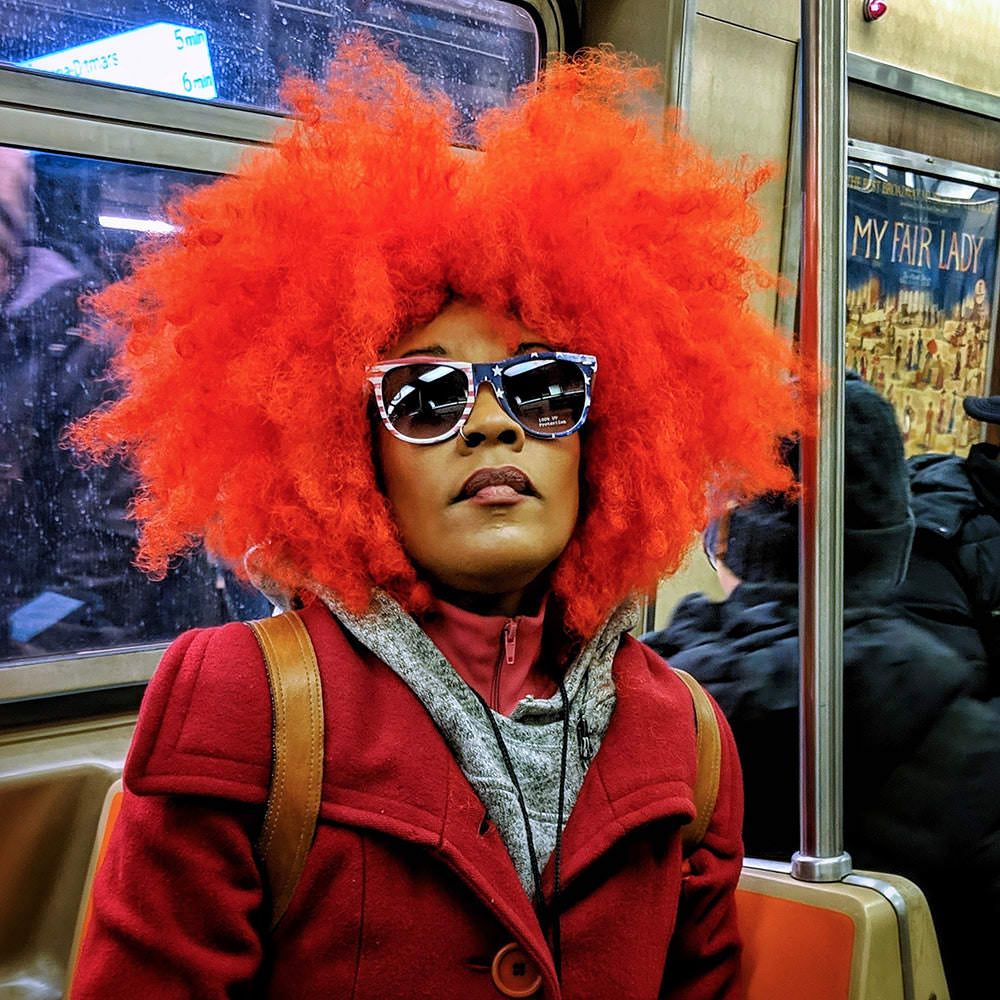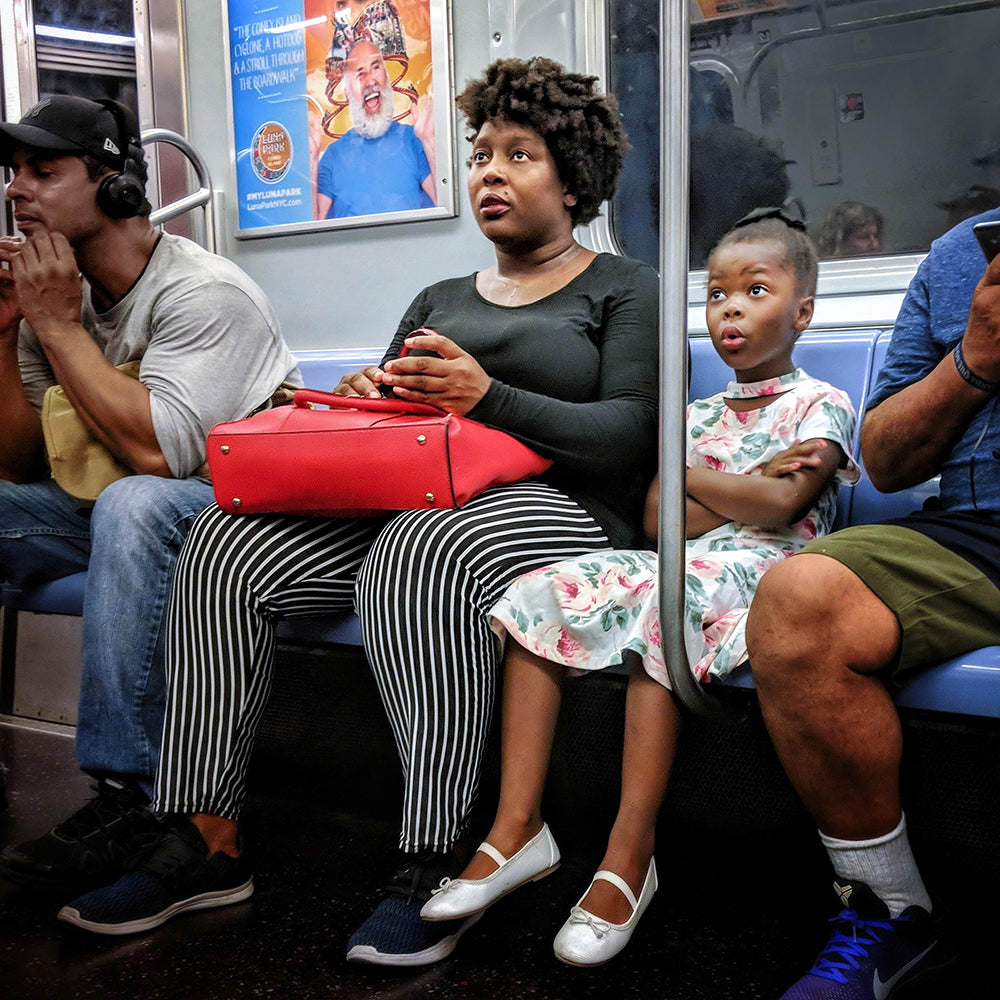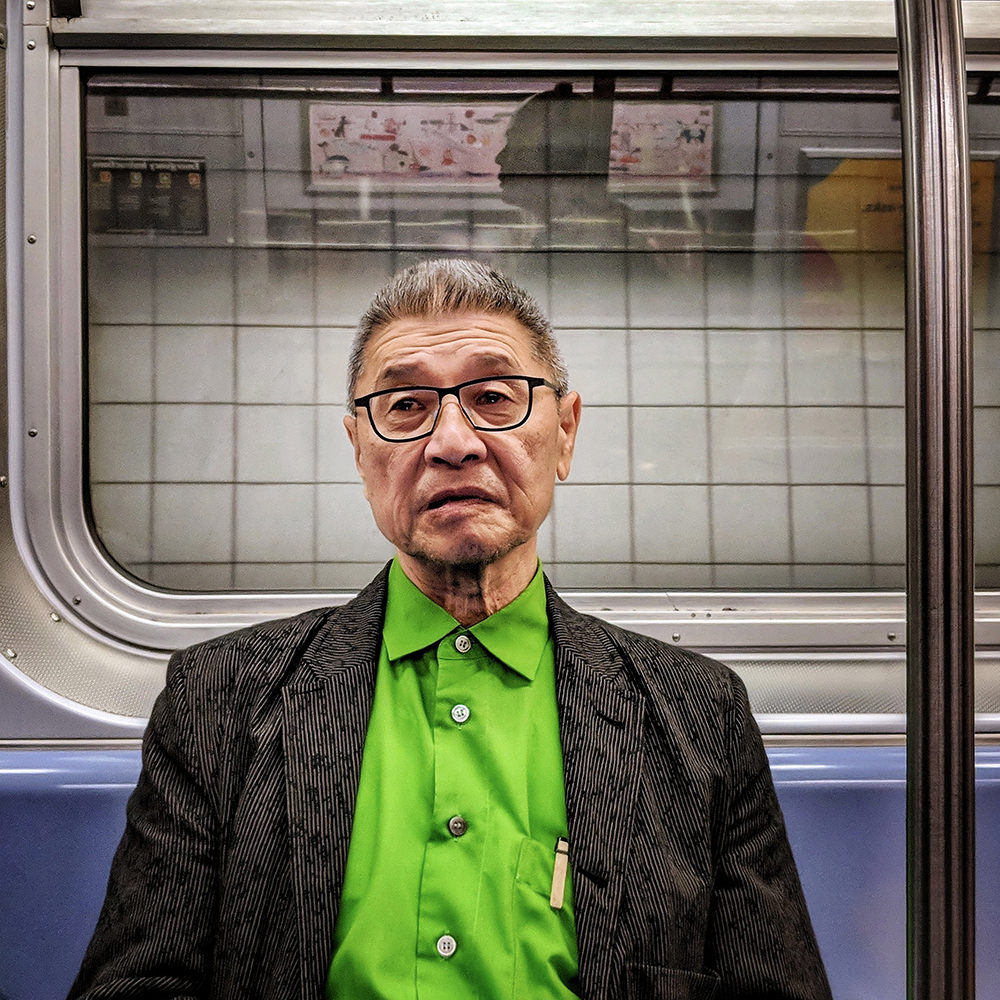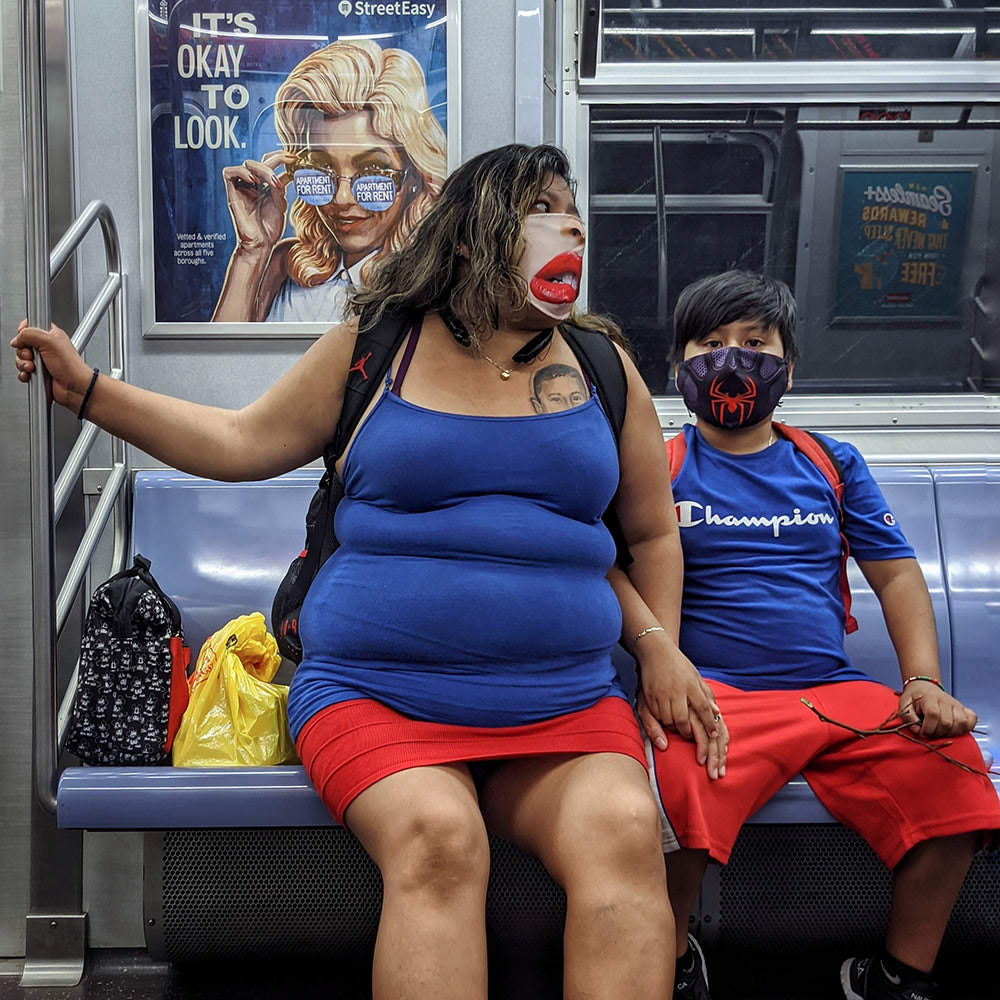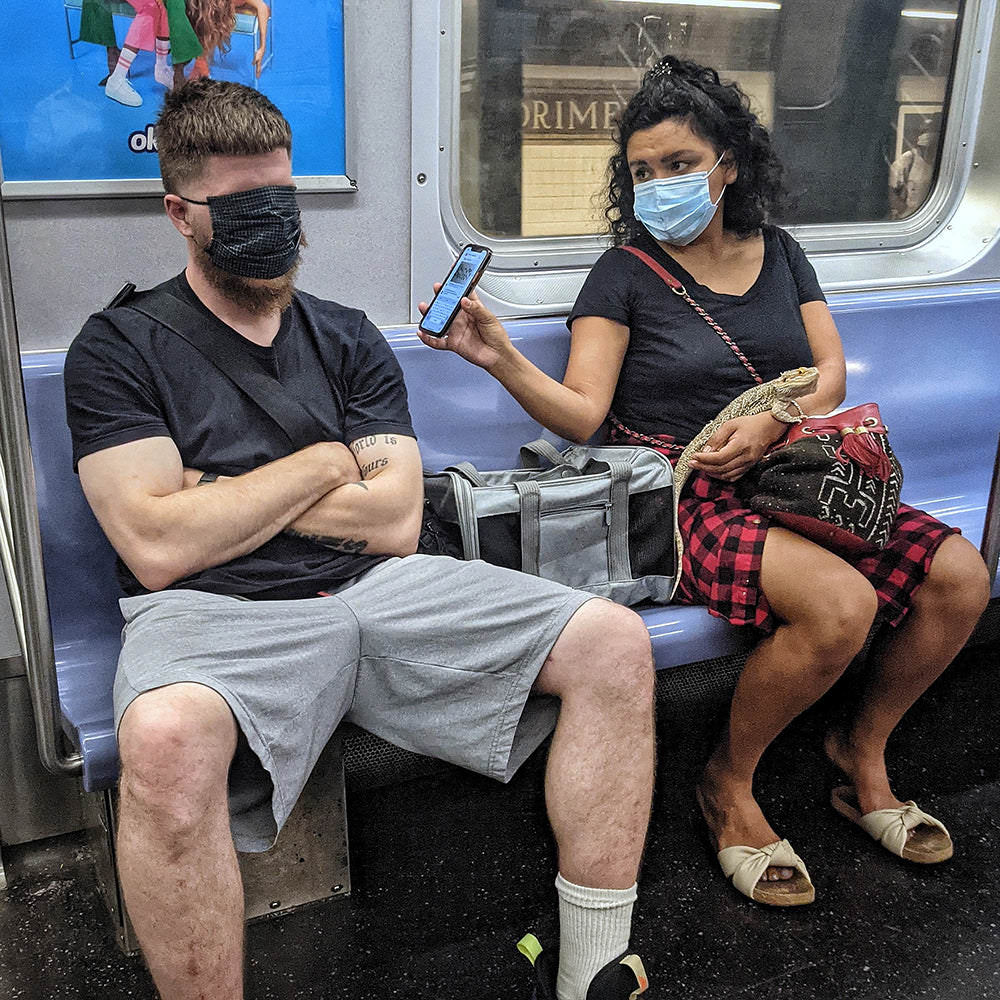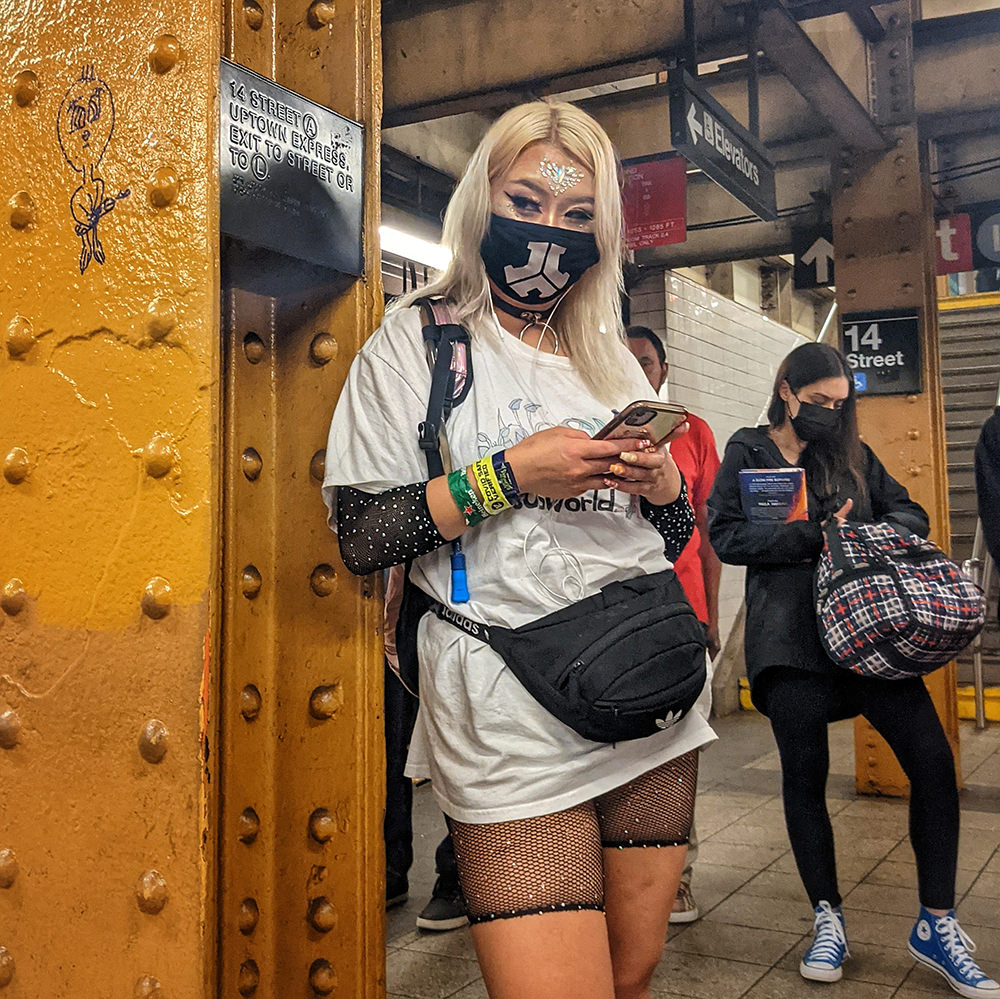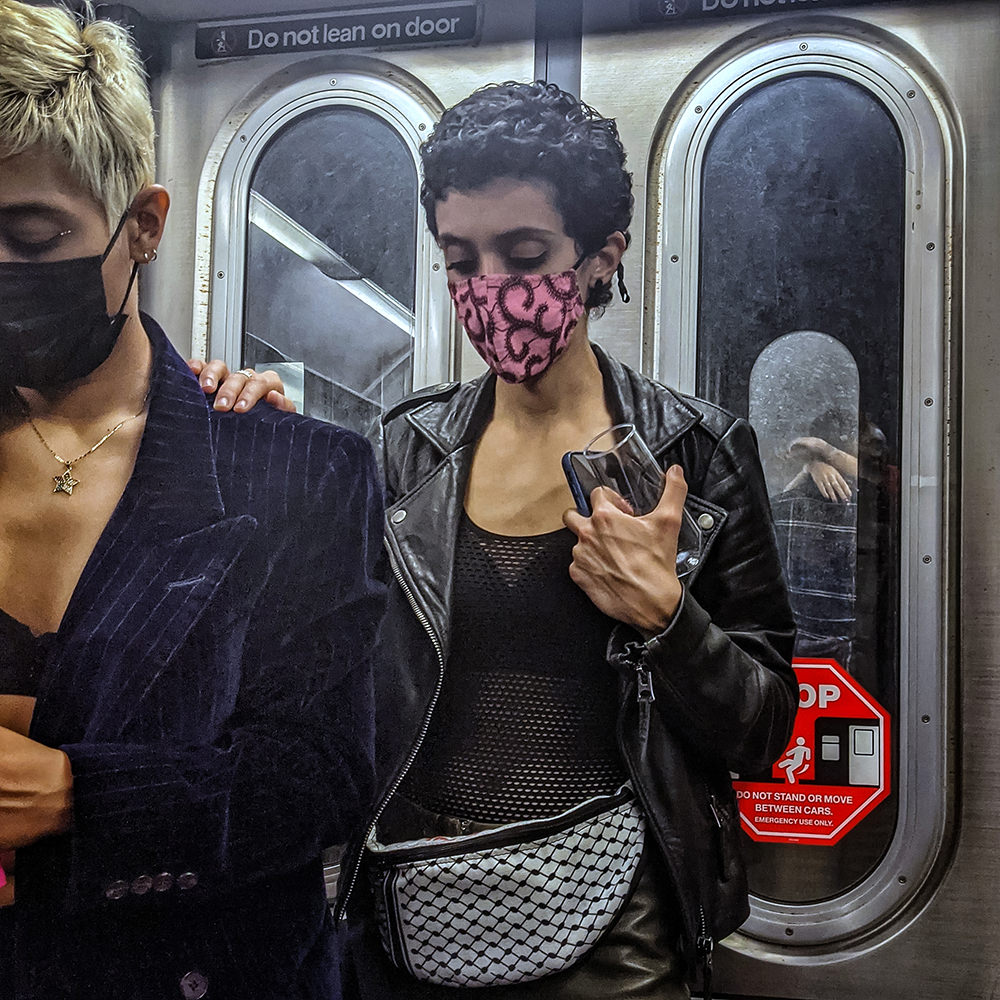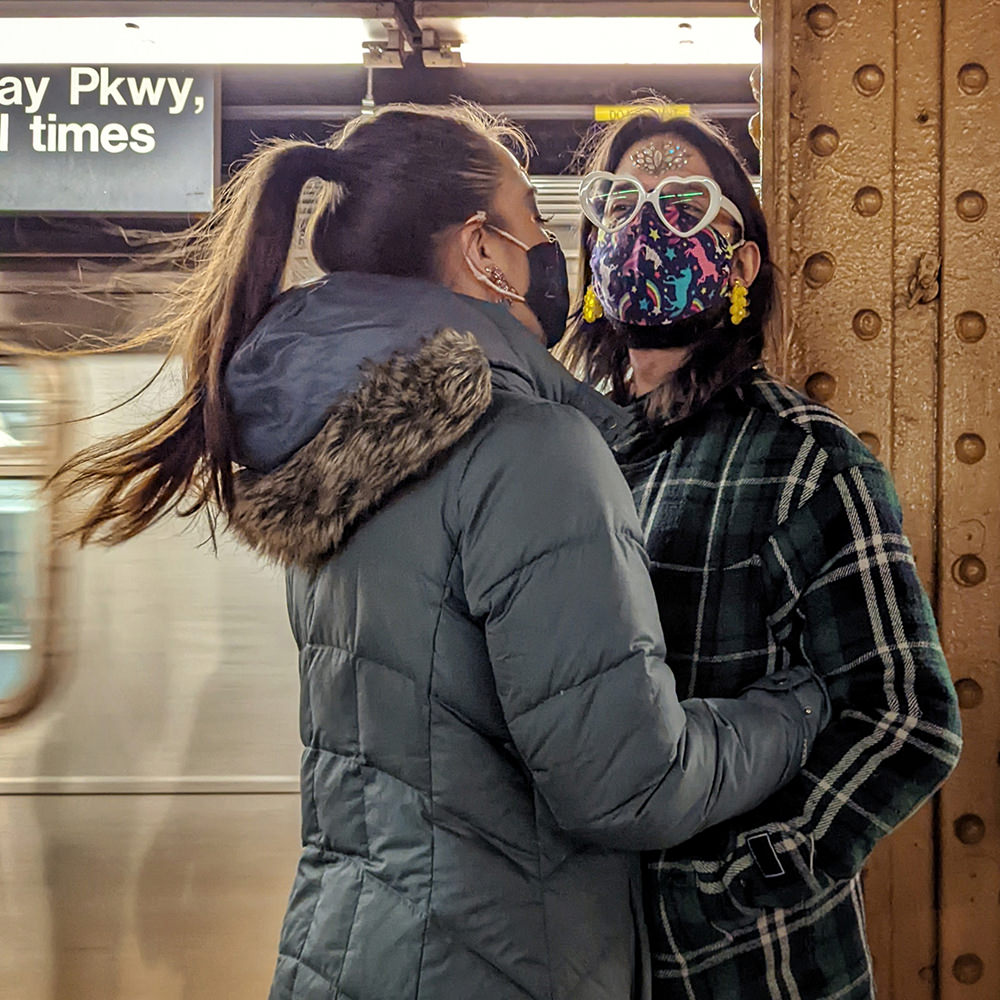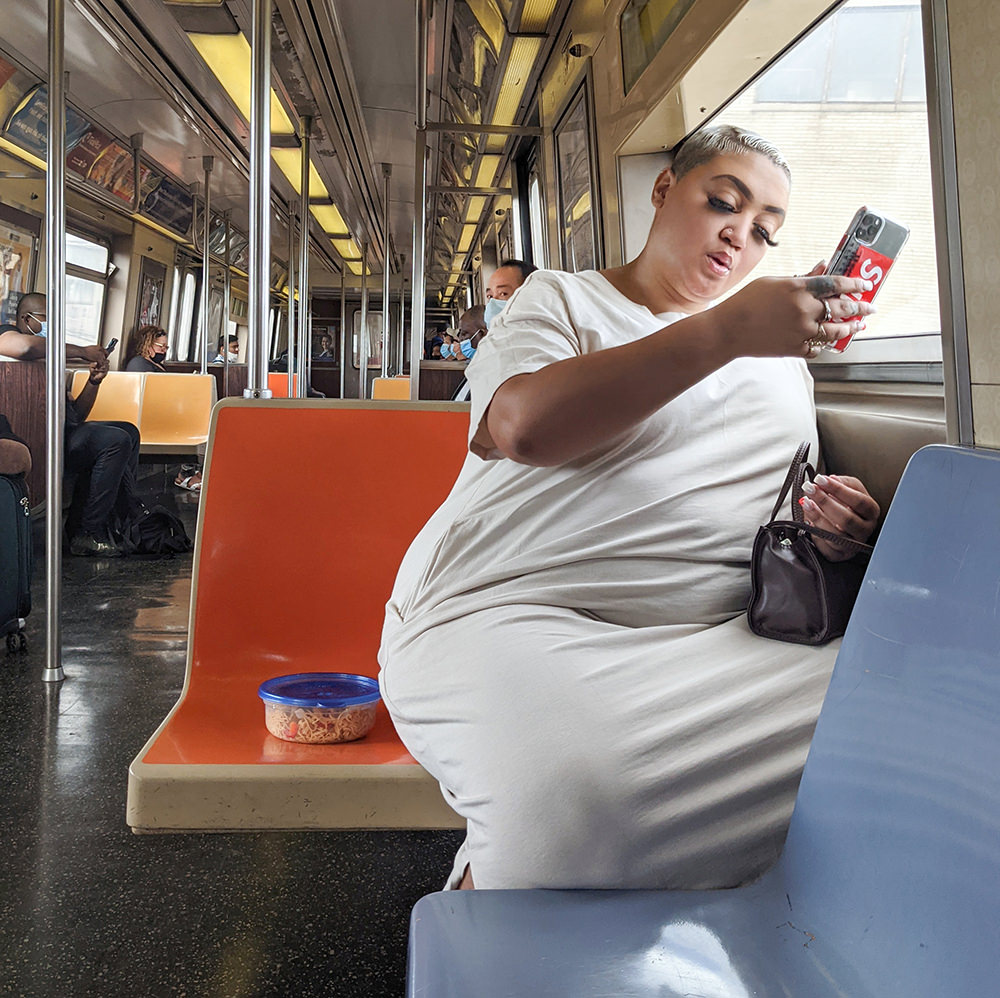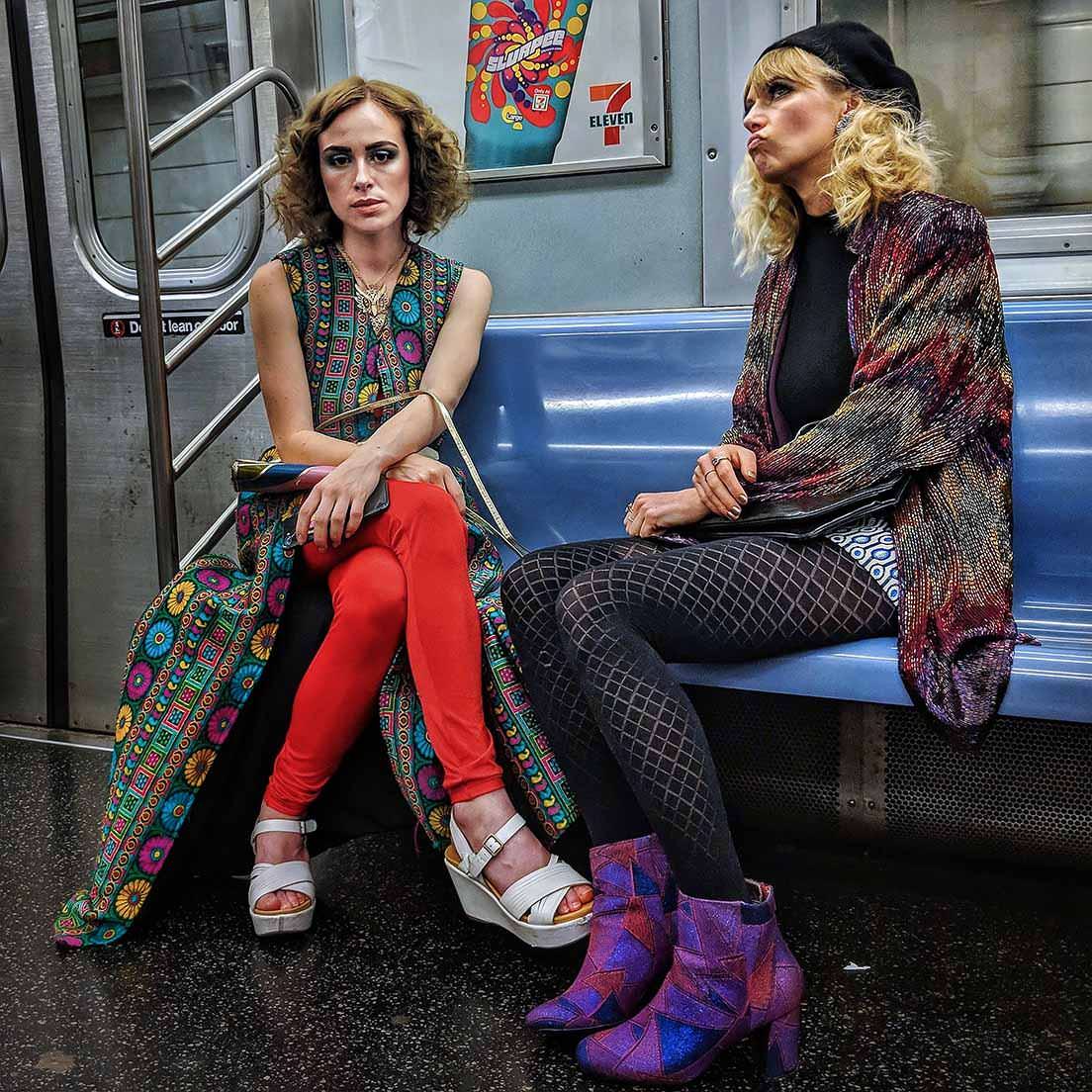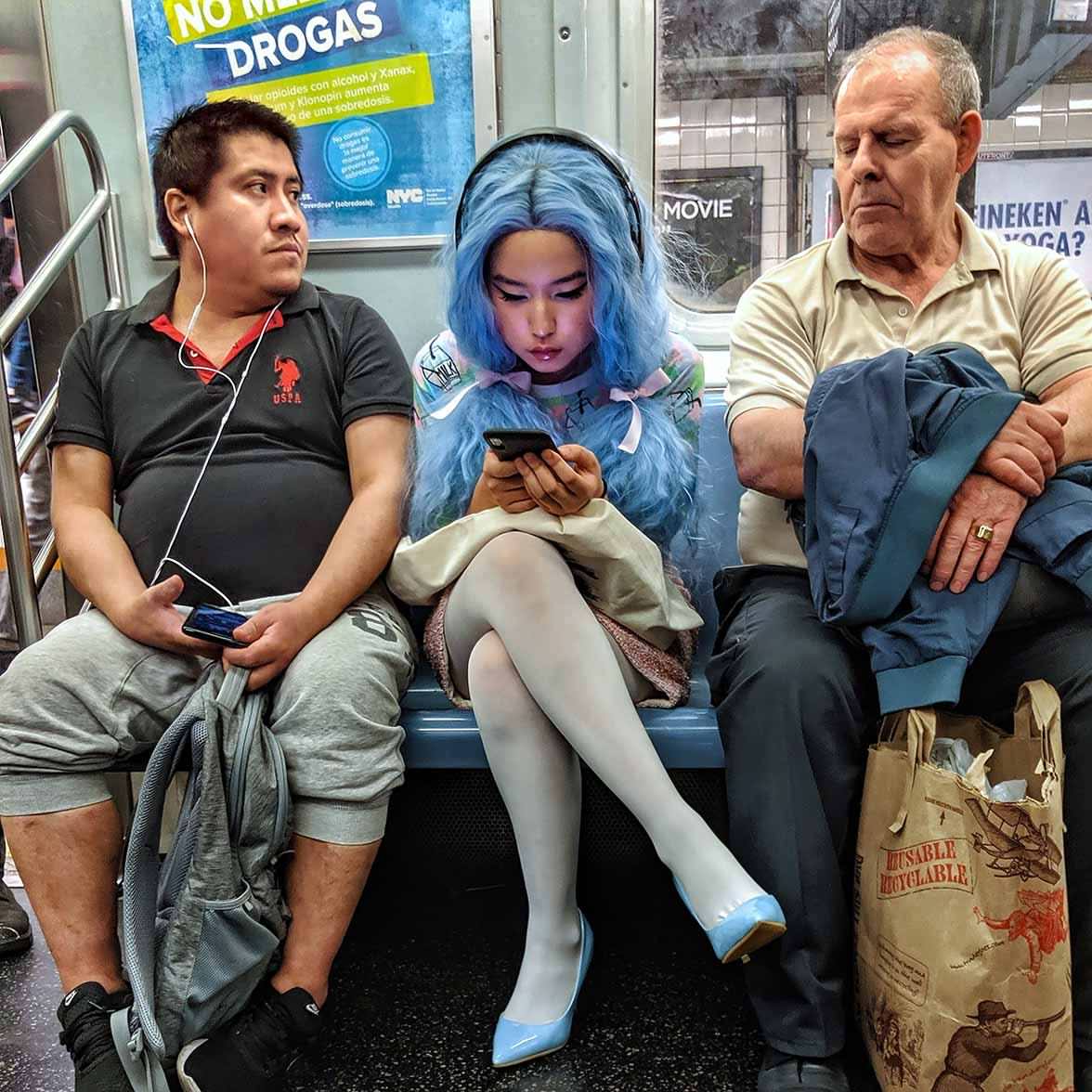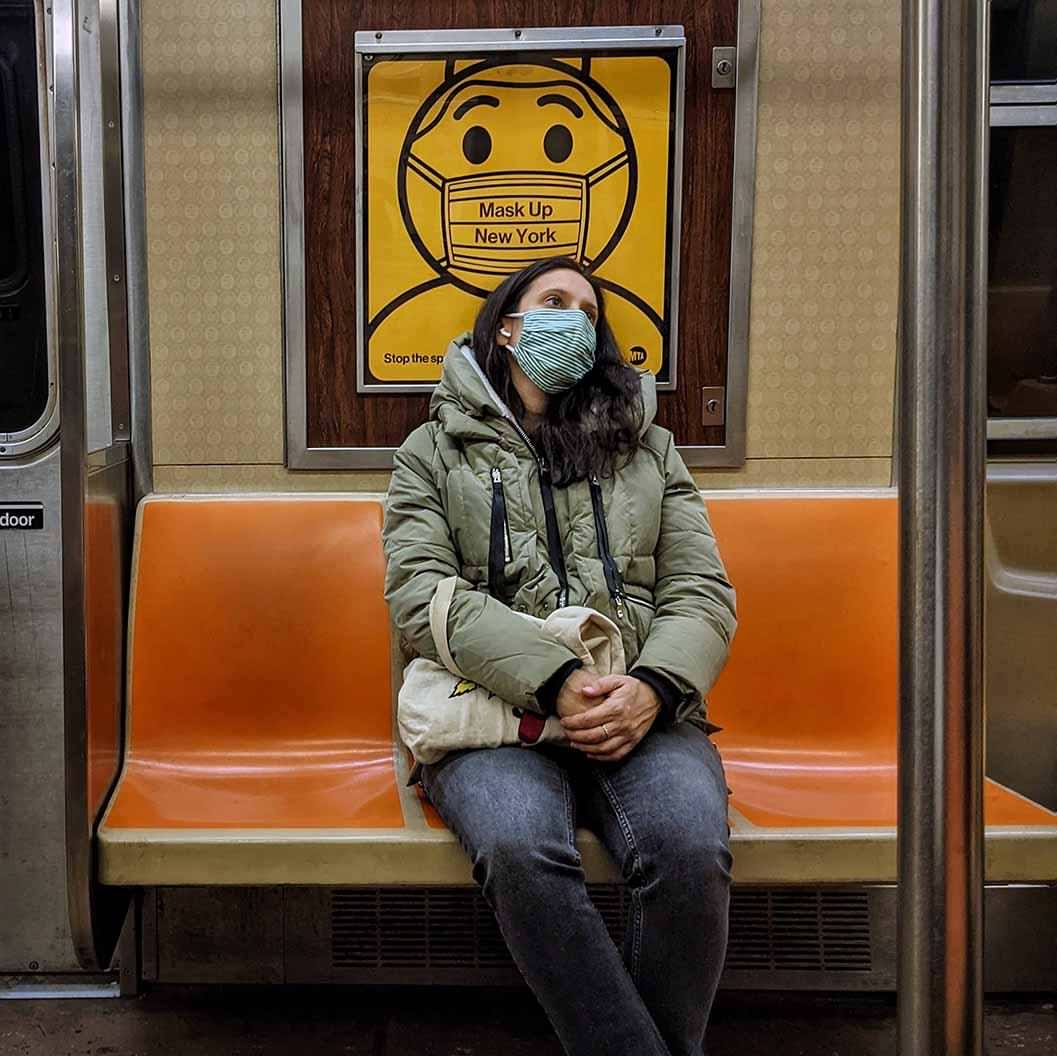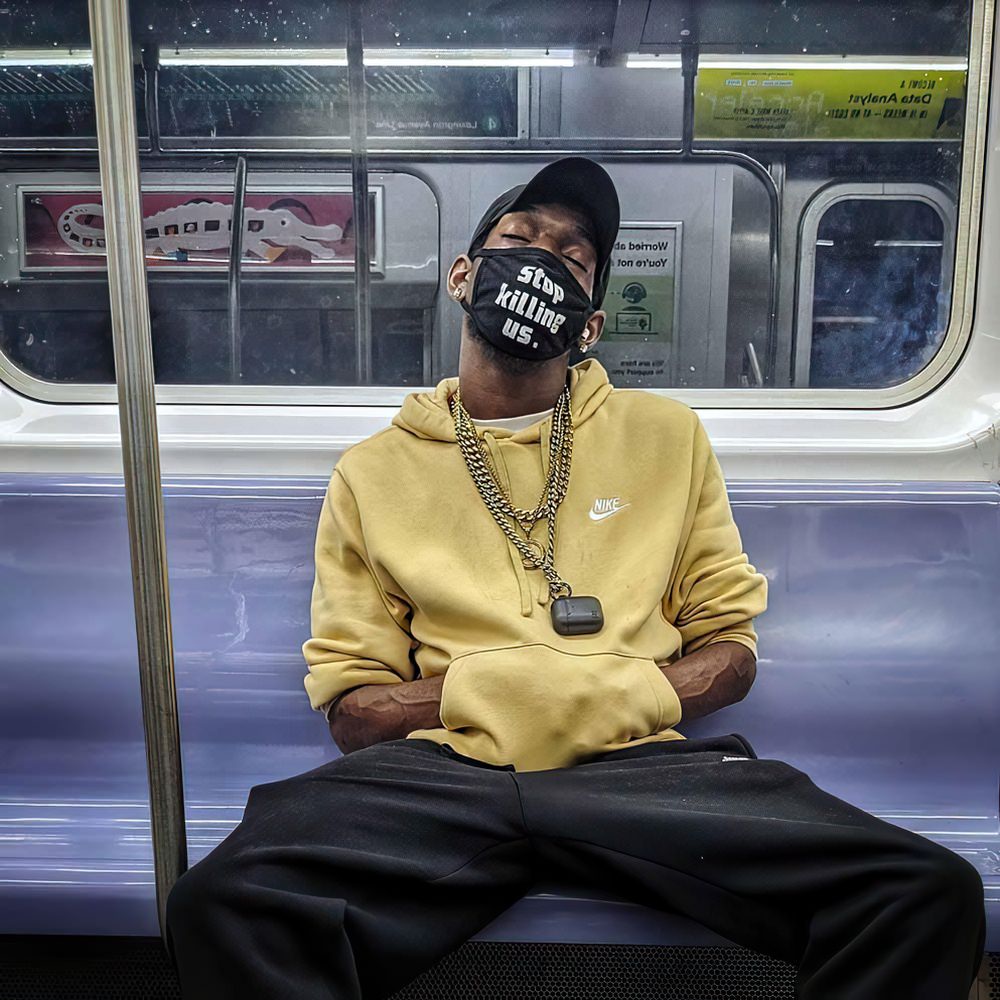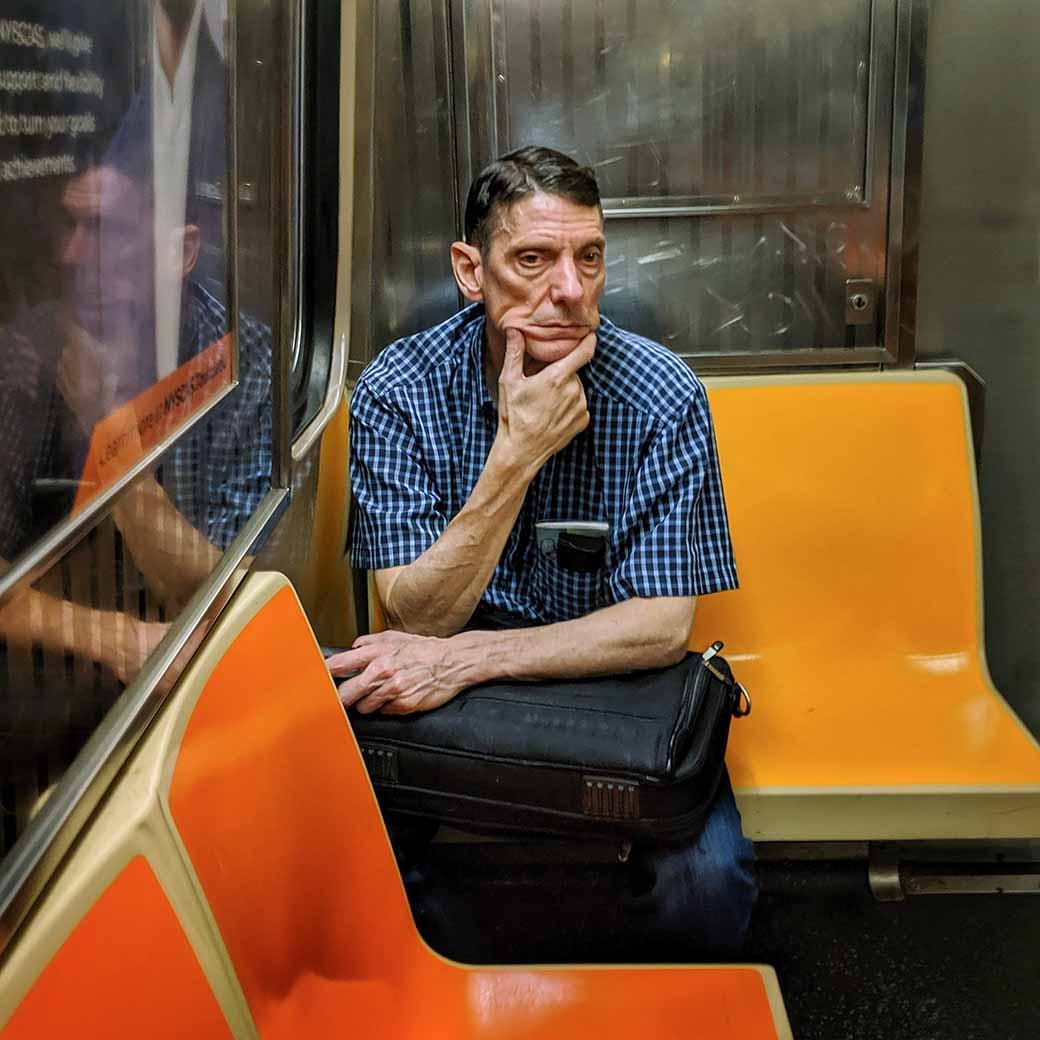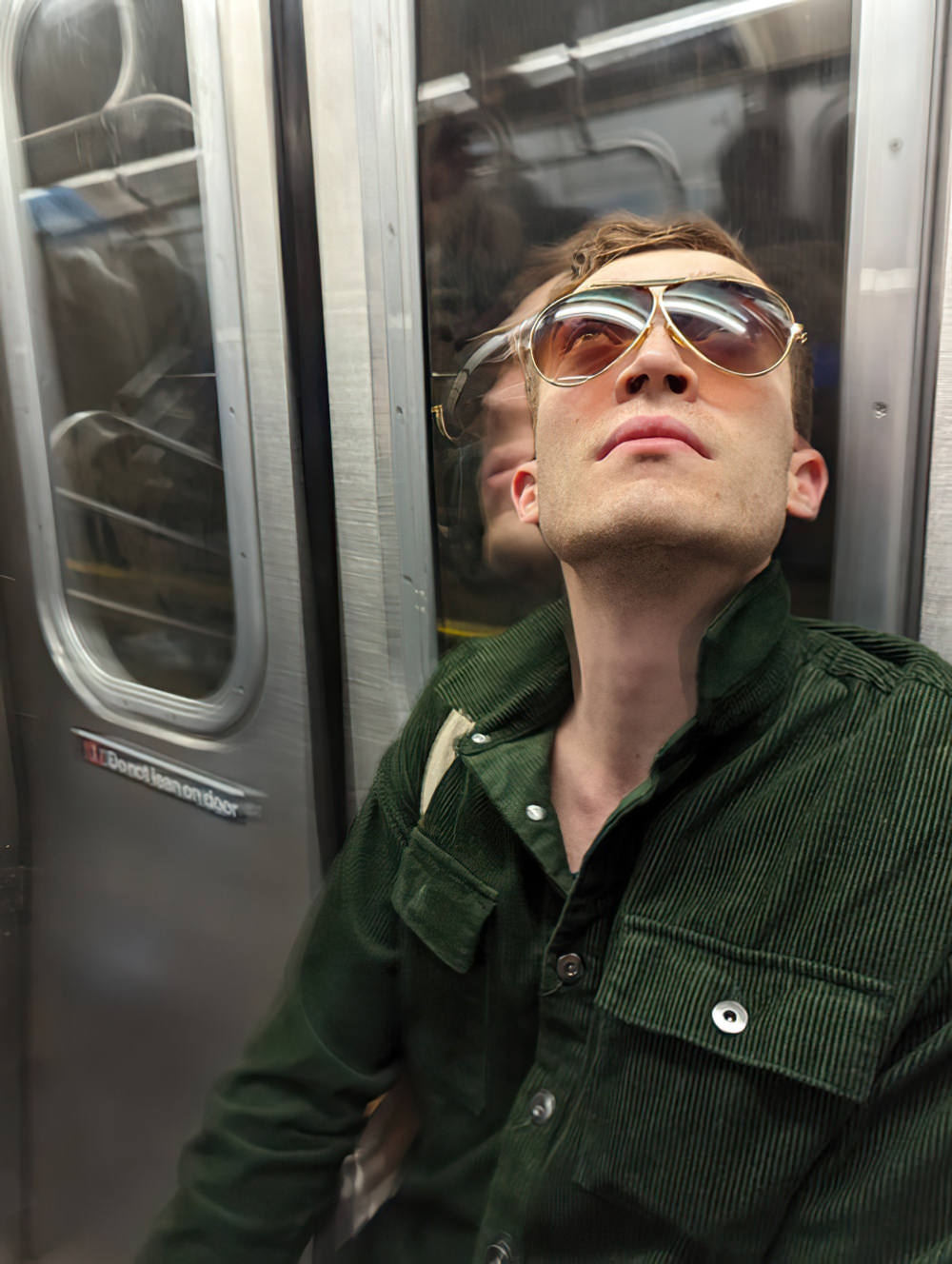Chris Maliwat: Subwaygram
New York City subways – the century-old transit system has survived two World Wars, the Great Depression, and Hurricane Sandy. It and the millions of citizens that rely on it as their daily lifeline will also survive the COVID-19 pandemic. Subwaygram captures mobile phone street portraits of the diverse community of riders two years before and two years after the first case was confirmed in New York City and the commonalities in the fleeting moments of their journeys.
In the tradition of street photography, Chris Maliwat caught moments of random people being themselves, and in doing so, elevated these moments. The setting was the New York City subway system, both in the trains and on platforms, and the culture and personality of this particular transit system is on display.
Distinguishing this body of work is, in part, the timeline. These portraits were taken the two years prior and the two years after the first COVID-19 cases were detected in Manhattan, and the book layout and photograph sequencing are structured to reflect this.
The book is divided in half, with the first part images pre-pandemic, and the last half post. The reminder of adjustments and changes brought on by COVID-19 are prescient in the appearance of facial masks on the subway riders in the latter portion of images.
This unique place in global history is a part of the overarching narrative of this project. Maliwat’s color mobile phone photos feel spontaneous and candid and intimate like a secret. As a result, the viewer also gains the sense of being seated on the subway alongside the rest of the riders. We see people dozing, looking out the window or at each other. These ordinary moments and gestures, considered in context of the pandemic, become more than the everyday–communities out in the world together become symbolic.
Journalist Aaron Morrison contributed an essay for this book, and he comments on the way this time period affected humanity. He notices that in the pre-pandemic body of images, the theme seems to be more on that relationship between the unconscious and self-conscious moment which we all navigate when in public settings. But with the onset of COVID-19, guarded caution and uncertainty are also part of this story of what it means to be in public among people. He writes:
“The woman seated below a public health warning, her eyes seeming to search for reassurance. The Black man found resting his eyes and wearing a ‘Stop killing us’ mask, a message and desperate plea of the times. I love you. I care about you. I’m with you. We’ll do this together. The system has had to carry on because many of its riders do, too. When millions stayed home, walled off from the lurking virus, classes of working people weren’t afforded that same choice.”
All at once, these 2020 images (as compared to the 2018 images) carry content explorations of class and race, mirroring the incidents and problems that expanded in the country during this particular time. Essential workers did not have the luxury of transitioning to at-home work. Morrison also reminds the reader of the rise in anti-Asian hate crimes during this time period, among others, that continues on to this day.
In this light, humanity together in a small metal compartment barreling along an underground track resonates differently. A cautious light shone on greater humanity’s ability, or decision, to just continue on, and forward.
“Yes, the coronavirus pandemic of 2020 greatly altered our existence. But the subway has to be impervious in the ways that humans are not. For that reason, Chris Maliwat’s Subwaygram is prescient and a rare body of work. A historical record, a testimony of our values, a parable of inequality. Moments worth preserving and studying.”—Aaron L. Morrison
About the Author
Chris Maliwat is a street-portrait photographer who captures surreptitious moments of everyday people on their journeys in the cities where they live.
In a world where people consciously and often obsessively cultivate an image to portray, he takes candid portraits—often without being noticed by the subject—to show how people look when they are unposed and unmasked.
Chris started with black & white film photography and now shoots primarily with his mobile phone and mirrorless full-frame cameras. Chris received an arts grant from the Stanford Arts & Technology Initiative and has studied photography at Stanford University and the International Center of Photography.

